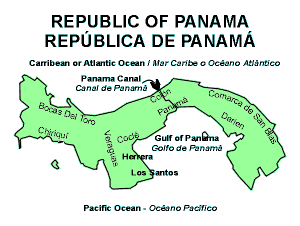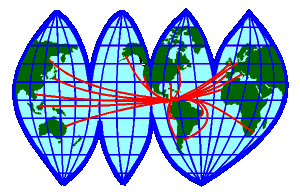|
Updated: January 09, 1999 This site is best viewed with Netscape 4.x, 800x600 pixels & 256 colors or above. |

|
Actualizado: 09 de enero de 1999 Este sitio está diseñado para Netscape 4.x, 800x600 pixeles y 256 colores o más. |
|
Updated: January 09, 1999 This site is best viewed with Netscape 4.x, 800x600 pixels & 256 colors or above. |

|
Actualizado: 09 de enero de 1999 Este sitio está diseñado para Netscape 4.x, 800x600 pixeles y 256 colores o más. |
| INDEX TO PANAMA |
English English text will always appear in standard text such as this note.
Españól |
ÍNDICE A PANAMÁ |
| Quick Map of Panama | Mapa Sencillo de Panamá | |
| Curious Notes About Panama | Notas curiosas de Panamá | |
| The Agent's List | La Lista de Agentes | |
|
NEW Tourism Real Estate |
NUEVO Bienes Raíces Turístico |
|
| The Property Page | La Página de Propiedades | |
|
|
|

|

|
|
Pequeña, pero única |
Donde el Mundo se encuentra |
| Back to top |
|
PANAMASmall, but unique
Panama was not part of the original continents when they separated from what is now, Africa and Europe. It was pushed out of the sea by the continental plates (as they pushed against each other) to join the two continents we now know as North and South America. A mountain ridge spans the country from the Costa Rican border to the Colombian border. It is believed that two groups of natives arrived in America. One group crossed from what is now Asia to Alaska and the other group came by sea (by way of the South Pacific), landing in what is now Peru. As both groups extended their domains (the northern group moving southward and the southern group moving northward), they met in Panama, along what is now the border between Veraguas (the only province in Panama that spans the country from the Pacific to the Atlantic) and Chiriquí and Bocas Del Toro. These two provinces are located on the western side of the country and also border Costa Rica. |
PANAMÁPequeña, pero única
Panamá no era parte de los continentes originales que se desprendieron de lo que es ahora Europa y África. Fue sacada del mar al chocar las placas continentales para llegar a unir los continentes de Norte América y Sur América. Una cordillera montañosa corre a lo largo del país desde la frontera de Costa Rica hasta la frontera de Colombia. Se cree que dos grupos de nativos llegaron a América. Un grupo cruzó por lo que hoy conocemos como Asia, hacia Alaska, y el otro grupo llegó por mar (por el Pacífico del Sur), llegando a Perú. Ambos grupos extendieron sus fronteras (los del norte hacia el sur y los del sur hacia el norte), Hasta encontrarse en Panamá donde hoy está la frontera de la provincia de Veraguas (la única provincia que va desde el Océano Pacífico al Océano Atlántico) y Chiriquí y Bocas Del Toro. Estas dos provincias están ubicadas en la parte oeste del país y tienen sus fronteras con Costa Rica. |
Where the World comes together |
Donde el Mundo se encuentra |
| Back to top | Regresar al inicio |
|
Sign My Guestbook
Firme mi Libro de Visitas |
|
View My Guestbook
Vea mi Libro de Visitas |